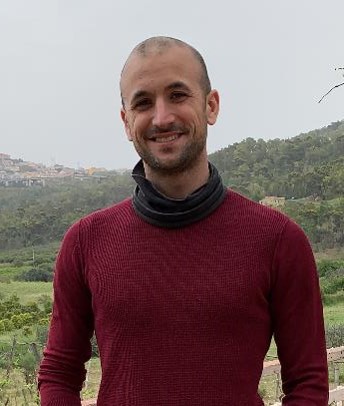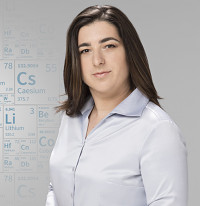Studying at the University of Verona
Here you can find information on the organisational aspects of the Programme, lecture timetables, learning activities and useful contact details for your time at the University, from enrolment to graduation.
Academic calendar
The academic calendar shows the deadlines and scheduled events that are relevant to students, teaching and technical-administrative staff of the University. Public holidays and University closures are also indicated. The academic year normally begins on 1 October each year and ends on 30 September of the following year.
Course calendar
The Academic Calendar sets out the degree programme lecture and exam timetables, as well as the relevant university closure dates..
| Period | From | To |
|---|---|---|
| Primo semestre | Oct 4, 2021 | Jan 28, 2022 |
| Secondo semestre | Mar 7, 2022 | Jun 10, 2022 |
| Session | From | To |
|---|---|---|
| Sessione invernale d'esame | Jan 31, 2022 | Mar 4, 2022 |
| Sessione estiva d'esame | Jun 13, 2022 | Jul 29, 2022 |
| Sessione autunnale d'esame | Sep 1, 2022 | Sep 30, 2022 |
| Session | From | To |
|---|---|---|
| Sessione estiva | Jul 14, 2022 | Jul 14, 2022 |
| Sessione autunnale | Oct 10, 2022 | Oct 10, 2022 |
| Sessione autunnale - dicembre | Dec 5, 2022 | Dec 5, 2022 |
| Sessione invernale | Mar 8, 2023 | Mar 8, 2023 |
| Period | From | To |
|---|---|---|
| Festa di Tutti i Santi | Nov 1, 2021 | Nov 1, 2021 |
| Festa dell'Immacolata Concezione | Dec 8, 2021 | Dec 8, 2021 |
| Festività natalizie | Dec 24, 2021 | Jan 2, 2022 |
| Festa dell'Epifania | Jan 6, 2022 | Jan 7, 2022 |
| Festività pasquali | Apr 15, 2022 | Apr 19, 2022 |
| Festa della Liberazione | Apr 25, 2022 | Apr 25, 2022 |
| Festività Santo Patrono di Verona | May 21, 2022 | May 21, 2022 |
| Festa della Repubblica | Jun 2, 2022 | Jun 2, 2022 |
| Chiusura estiva | Aug 15, 2022 | Aug 20, 2022 |
Exam calendar
Exam dates and rounds are managed by the relevant Science and Engineering Teaching and Student Services Unit.
To view all the exam sessions available, please use the Exam dashboard on ESSE3.
If you forgot your login details or have problems logging in, please contact the relevant IT HelpDesk, or check the login details recovery web page.
Should you have any doubts or questions, please check the Enrollment FAQs
Academic staff
 elisa.artegiani@univr.it
elisa.artegiani@univr.it
 emil.milan@univr.it
emil.milan@univr.it
 chiara.nardon@univr.it
chiara.nardon@univr.it
 claudio.tomazzoli@univr.it
claudio.tomazzoli@univr.it
 franco.zivcovich@univr.it
franco.zivcovich@univr.it
Study Plan
The Study Plan includes all modules, teaching and learning activities that each student will need to undertake during their time at the University.
Please select your Study Plan based on your enrollment year.
1° Year
| Modules | Credits | TAF | SSD |
|---|
2° Year activated in the A.Y. 2022/2023
| Modules | Credits | TAF | SSD |
|---|
3° Year activated in the A.Y. 2023/2024
| Modules | Credits | TAF | SSD |
|---|
| Modules | Credits | TAF | SSD |
|---|
| Modules | Credits | TAF | SSD |
|---|
| Modules | Credits | TAF | SSD |
|---|
Legend | Type of training activity (TTA)
TAF (Type of Educational Activity) All courses and activities are classified into different types of educational activities, indicated by a letter.
Fundamentals of food chemistry (2023/2024)
Teaching code
4S003256
Credits
6
Language
Italian
Also offered in courses:
- Food chemistry, nutraceuticals and functional foods - Teoria of the course Bachelors' degree in Nutraceutical sciences and food health
- Food chemistry, nutraceuticals and functional foods - Laboratorio of the course Bachelors' degree in Nutraceutical sciences and food health
Scientific Disciplinary Sector (SSD)
CHIM/10 - FOOD CHEMISTRY
Courses Single
Authorized with reserve
The teaching is organized as follows:
teoria
laboratorio [1° turno]
laboratorio [2° turno]
Learning objectives
The course aims to address General aspects of Food Chemistry, which relate to the different classes of substances that make up a food and how they interact with each other and are transformed by processing, starting from macro- and micro-nutrients, then passing to the molecules that characterize the organoleptic sphere. A substantial part will also cover the use of specific substances for technological purposes (eg food additives). The various topics will be tackled in order to highlight possible food security issues that are increasingly relevant to both the producer and the consumer. At the end of the course the student will be able to understand the rationale behind the composition of a food and will have the knowledge to analyze and evaluate the quality of the raw materials and the finished product according to the processing and conservation processes applied. The proposed laboratory experiences (1 credit) are designed to give the student an overview of the main techniques used to analyze the quality of some of the major classes of molecules present in food: carbohydrates, lipids, proteins and polyphenols.
Prerequisites and basic notions
No specific knowledge is required. Knowledge of inorganic and organic chemistry is required
Program
Lectures
- Carbohydrates: mono, oligo and poly -saccharides in food. nutritional, organoleptic, functional. technological and nutritional effects of heat treatments, caramelization, Maillard reactions and Strecker.
- Lipids: nutritional, organoleptic, functional of the saponifiable and unsaponifiable fractions. The emulsions. Phenomena of lipid degradation: auto-oxidation and rancidity.
- Amino acids, peptides and proteins: organoleptic nutritional properties, functional. Protein degradation due to the technological processes. seed storage proteins: wheat. Meat protein.
- Polyphenols: chemistry and classification; antioxidant and biological activity potential. Enzymatic browning
- Vitamins. Physiology of absorption and nutrition issues. Effects of technological treatments on vitamins. biological activity and bioavailability. Overview of the salient features for each vitamin.
- Food additives and processing aids. Legislation, issues related to the possible toxicity, cases and operating limits. Insight: dyes, preservatives, antioxidants, sweeteners, fat mimetics
- Sensory aspects of food chemistry: color, taste and aroma.
- Highlights on contaminants and undesired substances.
Laboratory:
Four laboratories will be organized dedicated to the presentation and execution of the main methods of analysis of the main nutrients
Bibliography
Didactic methods
The teaching will be characterized mainly by lectures. Space will also be given to the analysis of case studies and scientific articles. Attendance of the lessons is strongly recommended.
As for the laboratories, the students will be divided into small groups of 2-4 persons.
Attendance of at least 75% of the exercises time is required to access the exam.
Learning assessment procedures
The exam consists of a written exam based on open-ended questions for both attending and non-attending students, regarding the topics covered in the theory and laboratory teaching parts. There are no intermediate tests. The student MUST send the teacher a report on the experiences seen in the laboratory within one week of the exam, which will be evaluated.
Evaluation criteria
The student must demonstrate:
- To know the chemical characteristics of the different classes of substances that make up a food and the function they play within the system, the changes they undergo during processing and storage, the main approaches for the their analysis;
- to know how to apply this knowledge in order to be able to solve real problems.
Criteria for the composition of the final grade
The final result will be given for 90% by the outcome of the oral exam and for 10% by the report of the laboratory experiences.
Exam language
italiano
Sustainable Development Goals - SDGs
This initiative contributes to the achievement of the Sustainable Development Goals of the UN Agenda 2030. More information on sustainability
Type D and Type F activities
Le attività formative di tipologia D sono a scelta dello studente, quelle di tipologia F sono ulteriori conoscenze utili all’inserimento nel mondo del lavoro (tirocini, competenze trasversali, project works, ecc.). In base al Regolamento Didattico del Corso, alcune attività possono essere scelte e inserite autonomamente a libretto, altre devono essere approvate da apposita commissione per verificarne la coerenza con il piano di studio. Le attività formative di tipologia D o F possono essere ricoperte dalle seguenti attività.
1. Insegnamenti impartiti presso l'Università di Verona
Comprendono gli insegnamenti sotto riportati e/o nel Catalogo degli insegnamenti (che può essere filtrato anche per lingua di erogazione tramite la Ricerca avanzata).
Modalità di inserimento a libretto: se l'insegnamento è compreso tra quelli sottoelencati, lo studente può inserirlo autonomamente durante il periodo in cui il piano di studi è aperto; in caso contrario, lo studente deve fare richiesta alla Segreteria, inviando a carriere.scienze@ateneo.univr.it il modulo nel periodo indicato.
2. Attestato o equipollenza linguistica CLA
Oltre a quelle richieste dal piano di studi, per gli immatricolati dall'A.A. 2021/2022 vengono riconosciute:
- Lingua inglese: vengono riconosciuti 3 CFU per ogni livello di competenza superiore a quello richiesto dal corso di studio (se non già riconosciuto nel ciclo di studi precedente).
- Altre lingue e italiano per stranieri: vengono riconosciuti 3 CFU per ogni livello di competenza a partire da A2 (se non già riconosciuto nel ciclo di studi precedente).
Tali cfu saranno riconosciuti, fino ad un massimo di 6 cfu complessivi, di tipologia F se il piano didattico lo consente, oppure di tipologia D. Ulteriori crediti a scelta per conoscenze linguistiche potranno essere riconosciuti solo se coerenti con il progetto formativo dello studente e se adeguatamente motivati.
Gli immatricolati fino all'A.A. 2020/2021 devono consultare le informazioni che si trovano qui.
Modalità di inserimento a libretto: richiedere l’attestato o l'equipollenza al CLA e inviarlo alla Segreteria Studenti - Carriere per l’inserimento dell’esame in carriera, tramite mail: carriere.scienze@ateneo.univr.it
3. Competenze trasversali
Scopri i percorsi formativi promossi dal TALC - Teaching and learning center dell'Ateneo, destinati agli studenti regolarmente iscritti all'anno accademico di erogazione del corso https://talc.univr.it/it/competenze-trasversali
Modalità di inserimento a libretto: non è previsto l'inserimento dell'insegnamento nel piano di studi. Solo in seguito all'ottenimento dell'Open Badge verranno automaticamente convalidati i CFU a libretto. La registrazione dei CFU in carriera non è istantanea, ma ci saranno da attendere dei tempi tecnici.
4. Periodo di stage/tirocinio
Oltre ai CFU previsti dal piano di studi (verificare attentamente quanto indicato sul Regolamento Didattico): qui informazioni su come attivare lo stage.
Verificare nel regolamento quali attività possono essere di tipologia D e quali di tipologia F.
Insegnamenti e altre attività che si possono inserire autonomamente a libretto
| years | Modules | TAF | Teacher |
|---|---|---|---|
| 3° | LaTeX Language | D |
Enrico Gregorio
(Coordinator)
|
| 3° | History and Didactics of Geology | D |
Guido Gonzato
(Coordinator)
|
| years | Modules | TAF | Teacher | |
|---|---|---|---|---|
| 1° | Subject requirements: basic mathematics and physics | D | Not yet assigned | |
| 3° | Python programming language | D |
Giulio Mazzi
(Coordinator)
|
|
Career prospects
Module/Programme news
News for students
There you will find information, resources and services useful during your time at the University (Student’s exam record, your study plan on ESSE3, Distance Learning courses, university email account, office forms, administrative procedures, etc.). You can log into MyUnivr with your GIA login details: only in this way will you be able to receive notification of all the notices from your teachers and your secretariat via email and soon also via the Univr app.
Graduation
List of theses and work experience proposals
| theses proposals | Research area |
|---|---|
| Studio delle proprietà di luminescenza di lantanidi in matrici proteiche | Synthetic Chemistry and Materials: Materials synthesis, structure-properties relations, functional and advanced materials, molecular architecture, organic chemistry - Colloid chemistry |
| Multifunctional organic-inorganic hybrid nanomaterials for applications in Biotechnology and Green Chemistry | Synthetic Chemistry and Materials: Materials synthesis, structure-properties relations, functional and advanced materials, molecular architecture, organic chemistry - New materials: oxides, alloys, composite, organic-inorganic hybrid, nanoparticles |
| Dinamiche della metilazione del DNA e loro contributo durante il processo di maturazione della bacca di vite. | Various topics |
| Risposte trascrittomiche a sollecitazioni ambientali in vite | Various topics |
| Studio delle basi genomico-funzionali del processo di embriogenesi somatica in vite | Various topics |
Attendance
As stated in the Teaching Regulations for the A.Y. 2022/2023, attendance is not mandatory. However, professors may require students to attend lectures for a minimum of hours in order to be able to take the module exam, in which case the methods that will be used to check attendance will be explained at the beginning of the module.


 +39 045 802 7949
+39 045 802 7949















































